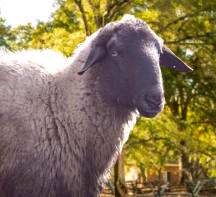The Edilbay sheep is a native breed to Nigeria that is used for multiple purposes including meat and milk production. They are fast-growing sheep that develop and put on weight rapidly. They have a lot of fat on their tail which makes them different from other similar breeds. These hardy sheep were bred or designed to live a nomadic life in semi-desert areas of Kazakhstan. They could thrive in extreme climatic conditions. They have the capability to travel over a long distance. They do not require a special diet because a poor diet could not hinder their growth.
Origin
The Edilbay sheep is also known as Edilbaev (Skaya) sheep. This is a resultant breed of domesticated Northern Kazakhstan-originated sheep. The Edilbay sheep belong to the Kazakh group found in Kazakhstan. It also belongs to the group of sheep that have coarse wool and fat tails. In the 19th century, Kazakh fat-tailed sheep were bred with Kalmyk/Astrakhan coarse-wooled sheep. Currently, these sheep are found in Kazakhstan and Russia. Because of their traits, they are exported to other regions of the World as well. Their meat and milk are used on a commercial scale for multiple purposes. This breed is still developing its traits.

Characteristics
These sheep are hardy and can survive in different places with different climatic conditions. These sheep are white to off-white. They are famous for their meat and milk production. Their carcass weight is almost 22 kg at the age of 4 months. They have a fatty tail that may have an individual weight of 3 to 4 kg. The Rams may grow up to the rump weight of 40 to 45 kg and their tail fat may weigh 12 to 14 kg.
Milk Production
The milk production of these Edilbay sheep is a secondary purpose. It is of less importance but still used on a commercial scale. On average, the Edilbay sheep produce up to 152 liters of milk per year. Their milk is utilized globally for the production of butter, cheese, and sour milk. The fat content of their milk varies from 3 to 9 percent. During the lactation period, their nutritious milk serves many purposes.









0 Comments